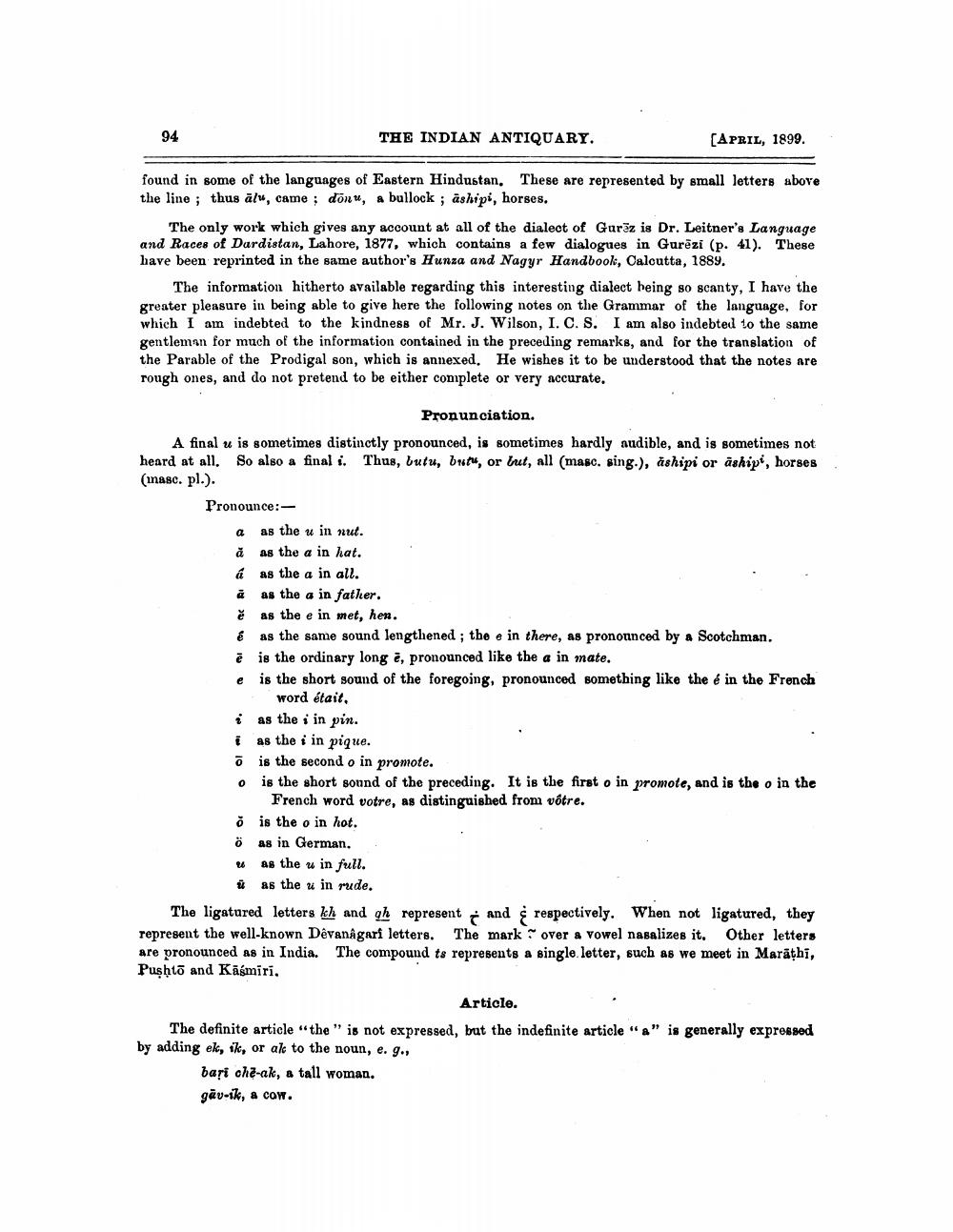________________
94
THE INDIAN ANTIQUARY.
[APRIL, 1899.
found in some of the languages of Eastern Hindustan. These are represented by small letters above the line ; thus ālu, came ; donu, a bullock; aships, horses.
The only work which gives any account at all of the dialect of Gurëz is Dr. Leitner's Language and Races of Dardistan, Lahore, 1877, which contains a few dialogues in Gurēzi (p. 41). These have been reprinted in the same author's Hunza and Nagyr Handbook, Calcutta, 1889.
The information hitherto available regarding this interesting dialect being so scanty, I have the greater pleasure in being able to give here the following notes on the Grammar of the language, for which I am indebted to the kindness of Mr. J. Wilson, I. C. S. I am also indebted to the same gentleman for much of the information contained in the preceding remarks, and for the translation of the Parable of the Prodigal son, which is annexed. He wishes it to be understood that the notes are rough ones, and do not pretend to be either complete or very accurate,
Pronunciation. A final u is sometimes distinctly pronounced, is sometimes hardly audible, and is sometimes not heard at all. So also a final i. Thus, butu, buth, or but, all (masc. sing.), åshipi or åshipi, horses (masc. pl.).
Pronounce:
a as the u in nut. à as the a in hat. á as the a in all. à as the a in father. è as the e in met, hen. é as the same sound lengthened ; the e in there, as pronounced by a Scotchman. ē is the ordinary long e, pronounced like the a in mate. e is the short sound of the foregoing, pronounced something like the é in the French
word était. i as the i in pin. i as the i in pique. ő is the second o in promote. o is the short sound of the preceding. It is the first o in promote, and is the o in the
French word votre, as distinguished from vôtre. ő is the o in hot. ö as in German. u as the w in full.
ů as the u in rude. The ligatured letters kh and qh represent and į respectively. When not ligatured, they represent the well-known Devanagari letters. The mark over a vowel nasalizes it. Other letters are pronounced as in India. The compound ts represents a single letter, such as we meet in Marathi, Pushto and Kasmiri,
Article. The definite article "the" is not expressed, but the indefinite article "a" is generally expressed by adding ek, ik, or ak to the noun, e. g.,
bari che-ak, a tall woman. gāv-ik, a cow.




